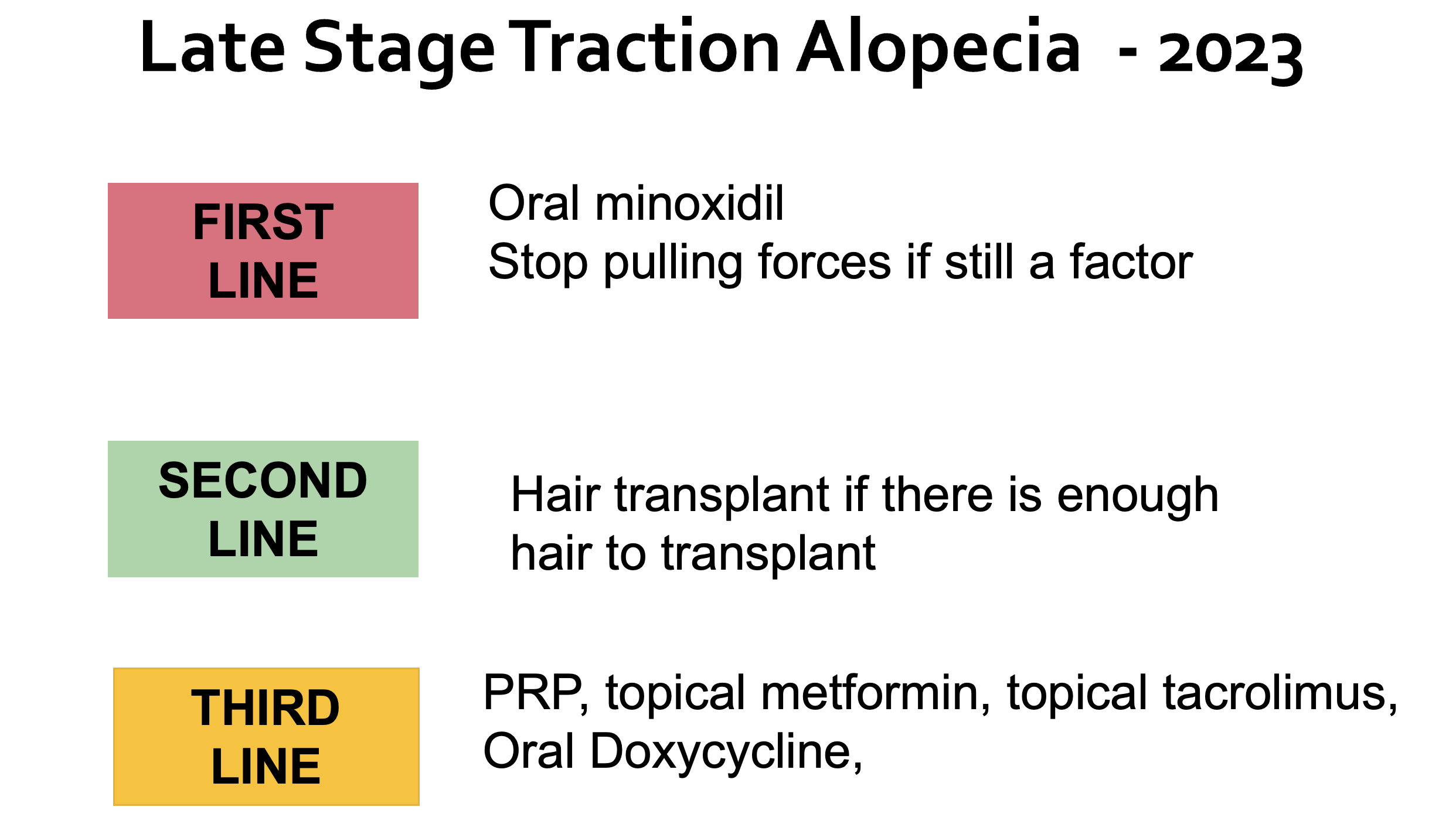Late stage traction alopecia: Is use of a serum worth it?
Options for late stage traction alopecia
I’ve selected this question below for this week’s question of the week. It allows us to review some concepts related to treating late stage traction alopecia.
Question
I am a 28 year old black woman and I have been told that I have “late stage traction alopecia.” I want to buy a specific serum from the internet to grow my hair back. Is this a good idea or am I wasting my money?
Answer
Well, if you are using the term late stage traction properly, then no - a serum is not likely to help all that much in the case of late stage traction alopecia. Unfortunately, a person with true late stage traction is not likely to experience much regrowth - at least not easily and not likely regrowable to any significant extent. A serum is not likely to achieve the regrowth goals that most people are looking for.
I would ideally like to see the scalp up close myself to determine if the term late stage traction is appropriate to describe the entire scalp and the real chance of regrowth. Sometimes the term late stage is given in a biopsy report but the reality is that the patient does have some reasonable chance of regrowth. Too often, clinicians just take the diagnosis from the biopsy report and give that diagnosis to the patient.
That’s not quite how it works.
By strict clinical definition, the term late stage traction means that the follicles are poorly responsive and there may even be some fibrosis. Late stage traction alopecia is poorly responsive to most treatment. But if it's really not late stage traction alopecia and rather it's early or mid stage traction alopecia ....then topical minoxidil can help and so can other treatments too (see chart below). For early and moderate traction alopecia stages, I prefer to go all out with periodic use of steroid injections every 2-3 months, use of topical minoxidil along with oral minoxidil (assuming there are no contraindications). Forces on the hair that contributed to the traction must be stopped such as braids, weaves, pony tails, cornrows, clips from hair pieces, and glue from hair pieces.
Rarely, I will also recommend adding PRP but never before using the prior options. Sometimes I include doxycycline too if an aggressive plan is needed to halt inflammation. If there is any evidence of CCCA in the mid scalp zones, I may even be more likely to recommend doxycycline and an aggressive treatment plan. For now, we’ll assume that traction alopecia alone (and not traction + CCCA) is present.
Hair transplantation is reserved for patients with traction alopecia that fail to respond well to treatment. It can work wonderfully well provide that traction alopecia is not in an actively progressive form and provided there are no other hair conditions present (like central centrifugal cicatricial alopecia).
I wish I could say that alot of options exist for “late stage” traction. More options exist for “earlier stages” of traction alopecia. Traction alopecia often requires more aggressive treatment than many realize. The only exception is traction alopecia of very short duration - such as when someone wore a certain hair style to a party or wedding or celebration one weekend and now the hair is falling out due to that hairstyle. Otherwise, there is inflammation and often fibrosis that needs to be aggressively addressed.
Good outcomes with traction often come with aggressive treatment and diligent follow up and multimodal treatments.
Here are some helpful treatment approaches to early/moderate and late stage traction alopecia.
REFERENCES
Donovan J. Helping Patients Reduce the Chances of Traction Alopecia.
Donovan J. Traction Alopecia: How long is too long?


